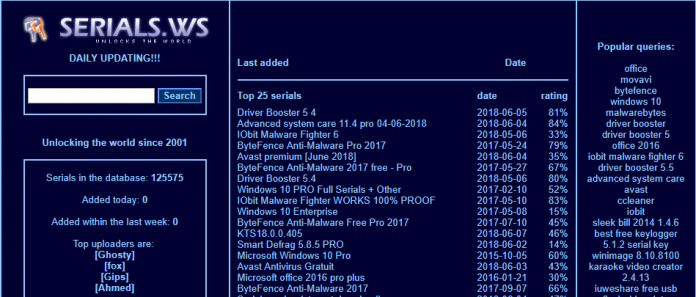
#SERIALS SERIAL#
Serials consist of a succession of issues, but the basic description of the serial is created from one issue. Description based on the first or earliest issue

This convention is known as latest entry cataloging and was also applied to serials prior to the adoption of AACR2 in 1981.ī. ( AACR2 21.2A1 and 21.3A2)įor integrating resources, because there is only one chief source at any one time, a single record is made and most changes ( FN1) are reflected in notes (field 247, 500, 550, etc.). Multiparts are cataloged according to “earliest entry” conventions. However, because multiparts are finite, a single record is made, rather than successive entry records, and changes to later parts are given in notes. Multipart items that are not complete as first issued are also successively-issued and changes in title or entry may also occur. The record for the "dead" serial is "closed off"-i.e., data elements are added or changed in the record to show that the title is no longer current (see CCM 21.3). The relationship of successive entry records is shown through linking entry fields (Module 14). This cataloging convention is called " successive entry cataloging." (See Module 16 for a complete list of potential major changes.) Each successive entry record contains information relevant only to the span of issues covered by that record. In the case of integrating resources, it is the mode of issuance that is the distinguishing factor.Ī new serial record is created each time a major change occurs according to AACR2 21.2C1 and 21.3B1a. In the case of multipart items, the distinguishing factor is the fact that multipart items are finite and serials are continuing. Serials, incomplete multipart items, and integrating resources are all issued over time and, thus, exhibit seriality. How cataloging a serial differs from cataloging a multipart item or an integrating resource Such changes may be in the title, issuing body, form of numbering, frequency, size and physical appearance, or just about anywhere else!ġ.2.2. Serials may have supplements, indexes, reprints, or special issues or may, themselves, be a supplement, index, reprint, or special issue.īecause serials are issued continuously, the information presented on them may change. Serials are often related to other serials (or monographs or integrating resources) - as earlier or later titles, companions, sections, language editions, translations, etc. Serial titles are often given in more than one place in the issue and sometimes in different forms. Serials are more often the work of one or more corporate bodies that have "issued" the serial. Most persons associated with serials are editors or compilers. Serials do not usually have personal authors.

The only category of serial that does not routinely bear numbering is unnumbered monographic series. Most serials have numbering - numbers or dates or combinations of both that distinguish the individual issues. This is particularly the case with periodicals (magazines, journals, etc.), newsletters, and newspapers. Instead, the title is found on the cover or at the beginning of the text. Serials are issued on a continuing basis, often with a regular frequency (e.g., annual, monthly, etc.). Serials are extremely diverse, including scholarly journals, popular magazines and newspapers, newsletters, annual and statistical reports, directories and yearbooks, and monographic series.

Here are some of the characteristics of serials. Serials are different! They don’t always look or behave like other types of publications.


 0 kommentar(er)
0 kommentar(er)
